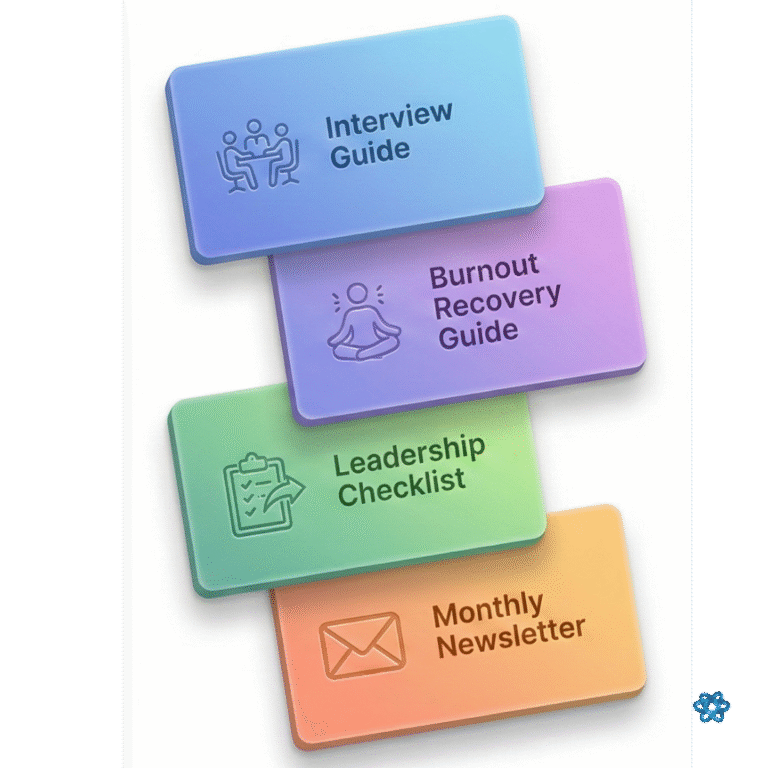Do you prefer tinkering with a broken engine to engaging in small talk at a party? If so, you might be an ISTP.
ISTPs are known as “The Virtuoso,” “The Crafter,” or “The Mechanic.”
They are defined by their hands-on approach to life, their cool-headed logic, and their quiet independence. They interact with the world, dissect it, and put it back together better than before.
This blog is a deep dive into the world of the ISTP, exploring their unique personality, from their personal life and relationships to their professional journey. We’ll uncover their natural strengths, challenges they face, and provide practical activities to help them thrive in a world that doesn’t always value their pragmatic, action-oriented style.
So, grab your tools and get ready to dismantle some ideas, because we’re about to unpack the mind of the ISTP.
Please note you are more than what is suggested in your MBTI, because the MBTI personality is an indicator and works on a spectrum. There are 16 MBTI typologies and you get to discover which align best with you.

ISTP at home
In your personal life, you are likely a quiet observer who is always ready for action.
As an introvert (I), you recharge by spending time alone, engaging in your hobbies, and focusing on the task at hand. While you can be charming and even a bit of a thrill-seeker in social settings, your energy is quickly drained by excessive social interaction.
Your sensing (S) preference is your connection to the tangible world. You live in the “here and now,” with a keen awareness of your physical surroundings. This makes you incredibly observant of details that others might miss, and it gives you a practical, grounded perspective. You learn best by doing, not by reading or theorizing.
As a thinking (T) type, you approach decisions with cool, detached logic. You value efficiency and objective analysis over emotional considerations. You’re driven by the desire to find the most effective solution to a problem, and you’re not afraid to put your feelings aside to get the job done. This can make you a calm and reliable presence in a crisis, but it can also be perceived as a lack of emotion in personal relationships.
Finally, your perceiving (P) preference means you love flexibility and spontaneity. You prefer to keep your options open and adapt to new situations rather than sticking to a rigid plan. This makes you an adventurer, always ready for a new experience, but it can also lead to a reputation for being a bit disorganized or non-committal.
In friendships and relationships, ISTPs are often drawn to individuals who can appreciate their independence and join them on their adventures. You show affection through shared activities and practical support, not through a lot of verbal or emotional expression. The key to a successful relationship for an ISTP is a partner who understands their need for space and their unique way of showing they care.

ISTP at the office
Now, let’s explore the professional landscape, where the ISTP’s love for problem-solving and hands-on work truly shines. Your professional life is likely focused on a tangible output, whether it’s a perfectly repaired machine, a successfully navigated flight, or a well-crafted piece of furniture.
You are motivated by results, competence, and a tangible sense of accomplishment.
Your professional superpowers
-
Practical problem-solving: Your Thinking (T) and Sensing (S) functions make you an exceptional problem-solver. You are able to quickly assess a situation, identify the root cause of a problem, and take immediate, practical action to fix it. You don’t get bogged down in theory; you focus on what will work in the real world.
-
Calm in a crisis: When faced with an emergency or an unexpected challenge, you remain remarkably calm. You are able to tune out the chaos and focus on the logical steps required to resolve the issue. This makes you invaluable in high-stakes situations like emergency services, law enforcement, or aviation.
-
Adaptability & resourcefulness: Your Perceiving (P) nature makes you highly adaptable to change. You are able to think on your feet and improvise when a plan falls apart. You are a resourceful individual who can make do with what you have, turning a challenging situation into a manageable one.
-
Technical mastery: You have a natural aptitude for understanding how mechanical and physical systems work. Whether it’s a computer, a car engine, or a complex piece of machinery, you can quickly learn to operate, fix, and improve it. This makes you a go-to expert in technical fields.

ISTP’s professional hurdles
Here are common challenges ISTPs face:
-
Difficulty with bureaucracy and rules: You will not blindly follow rules that you deem illogical or inefficient. You have a low tolerance for bureaucracy, red tape, and micromanagement. This can create friction with more traditional managers or in rigid corporate structures.
-
Social disconnect: Your introverted nature and focus on logic can make it difficult to engage in workplace small talk, team-building activities, or the necessary social politics of an office. You may be perceived as aloof or uninterested in your colleagues, even if that’s not your intention.
-
Lack of long-term planning: You live in the moment, which can be a strength, but it can also lead to a lack of long-term planning. You may prefer to deal with problems as they arise rather than proactively planning to prevent them, which can be frustrating for more organized team members.
-
Difficulty expressing emotions: Your natural preference for logic can make it difficult to express your feelings or to understand the emotional needs of others. This can be a challenge in leadership roles or in jobs that require a high degree of emotional intelligence.
ISTP’s areas for growth
ISTPs opportunities for improvement:
-
Communication: While you are brilliant at explaining a technical process, you may struggle to communicate your ideas in a way that is easily understood by non-experts. You might unintentionally use jargon or skip logical steps in your explanation, assuming others have followed your thought process.
-
Delegation: Because you’re an independent problem-solver, you may find it difficult to delegate tasks, assuming it’s faster to do it yourself. However, this limits your potential for growth and can create bottlenecks in a project.
-
Emotional intelligence: Your focus on logic means you may miss emotional cues from colleagues. You might be blunt with feedback, not realizing the impact your words have on others. Developing empathy and consciously considering the feelings of others is a crucial growth area.
-
Structured planning: While you love flexibility, a certain level of structured planning and project management is essential for project success. Learning to create and follow a timeline, even if you adapt it along the way, is a vital skill.

ISTP's ideal career paths
Given your unique strengths and challenges, certain career paths naturally align well with the ISTP personality. You thrive in environments that value hands-on work, autonomy, and the opportunity to solve tangible problems.
Ideal career paths:
-
Engineering/mechanics: Whether it’s automotive, mechanical, or electrical engineering, these fields require the kind of logical, hands-on thinking that comes naturally to you.
-
Skilled trades: Careers like welding, carpentry, plumbing, or being an electrician allow you to use your hands and your mind to create or repair tangible things.
-
Law enforcement/emergency services: Your ability to remain calm under pressure and think on your feet makes you an excellent fit for high-stakes roles like a police officer, firefighter, or paramedic.
-
Pilot/aviation: This field requires a mastery of technical systems, a calm demeanor, and the ability to react quickly and logically to unexpected situations.
-
Computer science: Roles in cybersecurity, hardware development, or IT troubleshooting are perfect for your love of logical systems and problem-solving.
Improving your communication skills (both written and verbal) and learning the basics of project management can significantly improve your career development. Practice them intentionally. Seek out coaching services, mentors, and colleagues to help you bridge the gap between your brilliant ideas and the practical realities of implementation.

ISTP's preferences in the workplace
ISTP’s communication preferences
ISTPs naturally lean towards a direct, logical, and factual communication style. You prefer to get straight to the point and discuss solutions, not feelings. You are not a fan of small talk.
-
You prefer: Clear, concise communication that is free of jargon and emotional fluff. You appreciate when others can back up their statements with evidence or a logical argument.
-
You dislike: Passive-aggressive behavior, emotional outbursts, or conversations that lack a clear purpose. You might become impatient with people who are more concerned with feelings than with solving a problem.
To improve, practice a more assertive communication style. This means expressing your ideas clearly and confidently, while also acknowledging that others may have a different point of view. When giving feedback, try to start with a positive or neutral statement before offering your logical critique.
INTP’s teamwork preferences
In a team setting, you are not typically the one leading the cheers or taking on a highly social role. You prefer to contribute your brilliant ideas and then retreat to your workspace to execute.
-
You prefer: Teams that are meritocratic and value ideas based on their logic, not on who presented them. You enjoy working with independent thinkers who can handle their own tasks without constant supervision.
-
You dislike: Micromanagement, team-building exercises, or long, unnecessary meetings that could have been an email. You might become frustrated with team members who lack intellectual rigor or rely too heavily on emotional arguments.
To be a better team player, make a conscious effort to communicate your progress and ask for help when you need it. Remember that some team members thrive on social connection, so a brief check-in or a quick coffee break can go a long way in building trust.

ISTP’s project preference
Your ideal project management style is flexible and focused on innovation. You’re great at the execution phase but can struggle with the initial planning.
-
You prefer: Projects with clear, hands-on goals and flexible pathways to achieve them. You enjoy problem-solving on the fly and adapting to new information. You prefer to get to work and figure it out as you go.
-
You dislike: Overly rigid project plans, excessive documentation, and micromanagement of tasks. You might find detailed Gantt charts stifling and prefer a more organic evolution of the project.
To improve, practice breaking down your big ideas into smaller, manageable tasks. Develop a system for tracking progress and ensuring deadlines are met, even if you adapt them along the way. Remember that structure, while sometimes tedious, is often necessary for successful implementation.
ISTP’s conflict resolution preferences
When it comes to conflict, your natural inclination is to approach it logically, often by taking a step back to analyze the situation. You see conflict as an opportunity to clarify misunderstandings and arrive at a logical solution.
-
You prefer: Open and direct confrontation of issues, where all parties lay out their arguments logically. You expect solutions to be based on reason and objective facts, not emotional appeals.
-
You dislike: Passive-aggressive behavior, emotional outbursts that lack rational basis, or avoiding conflict altogether. You might get frustrated if others aren’t willing to engage in a direct, intellectual discussion to resolve problems.
To improve your conflict resolution skills, remember that not everyone processes conflict in the same way. Practice acknowledging others’ emotions, even if you don’t fully understand them, before diving into a logical analysis. Sometimes, a person needs to feel heard before they can engage in a rational discussion.

Activities for growth as an ISTP
The “Jargon-Free” communication challenge 🗣️
Your mind is a brilliant source of complex ideas, but communicating them to others can be a challenge. This activity helps you bridge that gap.
Goal: To consciously practice explaining a complex idea in simple, easy-to-understand terms.
Practice: Think of your latest idea, and your goal is to explain it in a way that a 5-year old can understand. Practice how you might change your language, words, jargons, etc. so it’s easy to understand. Practice explaining to a colleague who does not have an expertise on the latest idea, use the simplified language and check their understanding. Ask clarifying questions, and then ask for their feedback on your idea and the delivery of the idea.
Why it works: This activity forces you to step outside of your logical framework and consider the perspective of a different mind. It helps you translate your internal world of intricate thoughts into language that others can understand, making your ideas more accessible and your collaboration more effective.
The “Process-Mapping” Exercise 📝
Your mind is a brilliant idea generator, but implementation can be a challenge. This activity helps you bridge the gap between brilliant ideas and concrete action.
Goal: To develop a structured approach to moving from an exciting idea to a tangible plan, fostering persistence and a focus on details.
Practice: Pick one new idea for a team project, spend 10 minutes on why it’s important and what is your desired outcome – don’t extend the timeline, this will help your Perceiving side from taking over to an endless deadline. The time constraint will help you maintain focus. Brainstorm for 15 minutes on broad details – think what needs to be done, by whom, when is the deadline. Spend 5 minutes reviewing and adapting to the team and make them SMART goal (actionable).
Remember you’re Perceiving – it’s okay to adapt the plan, but now you have a starting point and a sense of direction. Schedule check-ins to review progress and get started!
Why it works: This activity leverages your love for brainstorming and big-picture thinking while gently guiding you towards the necessary details and structure. By breaking it down, the overwhelming “execution” phase becomes a series of manageable, logical steps that you can either complete or delegate..
Embrace your ISTP "Virtuoso"
Being an ISTP is an exciting journey of hands-on exploration, practical problem-solving, and quiet competence.
You are the quiet master who can fix what’s broken, the calm presence in a storm, and the resourceful individual who can make things work. While your unique wiring comes with its own set of challenges, understanding these aspects is the first step towards transforming them into even greater strengths.
By consciously improving your communication, learning to work within a team, and bridging the gap between brilliant ideas and tangible actions, you can unleash your incredible potential and make an indelible mark on whatever field you choose. Go forth, question, analyze, and build – the world needs your unique brand of genius.

